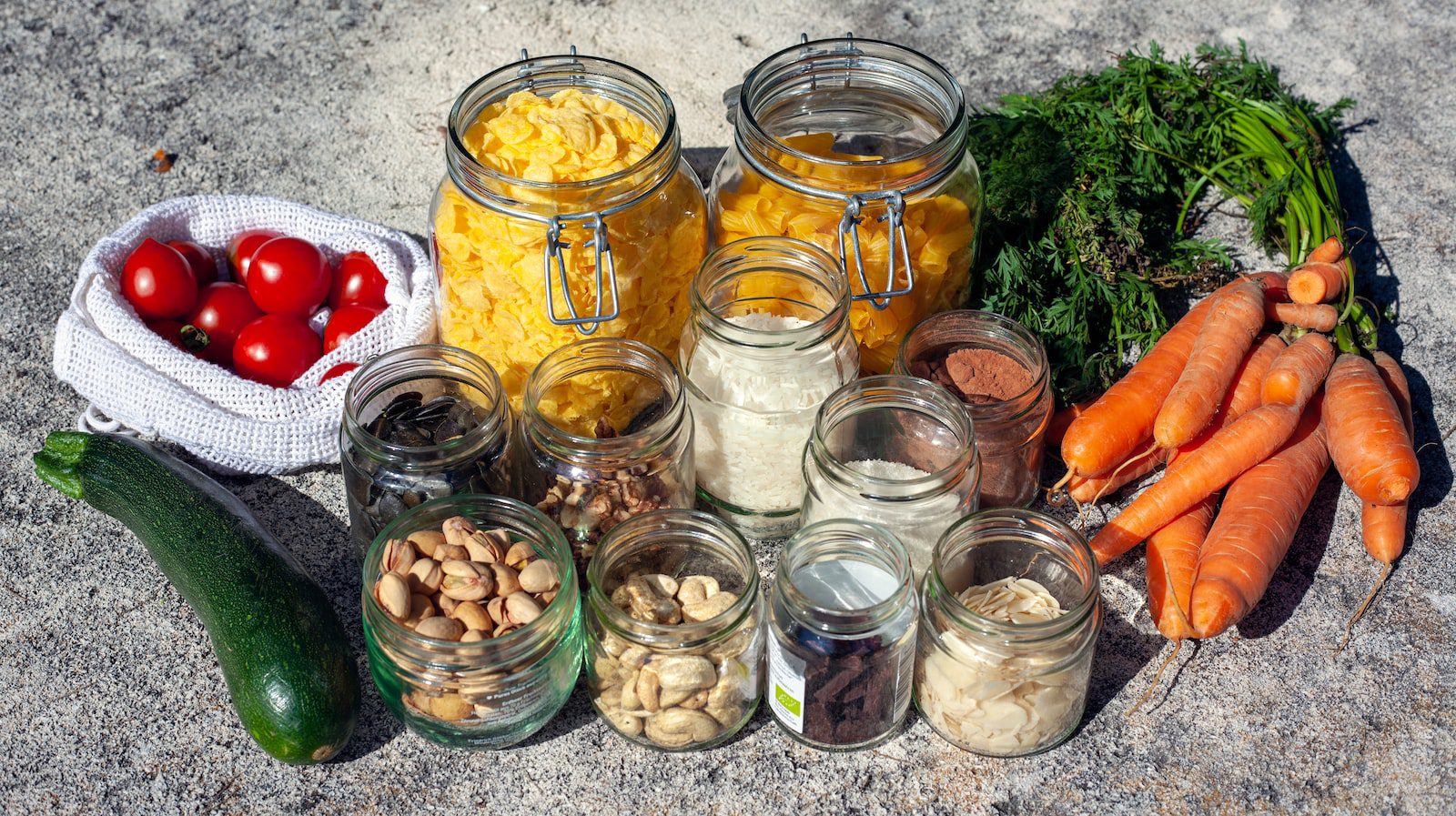The kitchen is the heart of the home, and it’s also the source of a lot of the home’s trash. Making adjustments to reduce the waste you create in your kitchen can have a big impact on your overall zero waste lifestyle. Here are some things you might consider as you start creating a zero waste kitchen:
- Replace paper towels/plastic wrap/aluminum foil/parchment paper
- Use food scraps to make more food
- Learn some common zero waste ingredient swaps
- When you want new kitchen gadgets, start at the thrift store
Replace paper towels/plastic wrap/aluminum foil/parchment paper
- Instead of buying paper towels, make rags by cutting up old clothes or sheets. I store a pile of rags next to an empty plastic box below the sink. When I use a rag to wipe up a mess, I just rinse it and toss it in the plastic box (or drape it over the side of the box, if the rag is still wet). On laundry day, the used rags go in the wash and then go right back into the rag pile. Sometimes I make a particularly sticky mess that I don’t want going in the laundry, so I’ll throw away the rag I use to clean it up… but the rag was from an old shirt I might have thrown away long before, and I never even touched a paper towel!
- There are lots of great uses for plastic wrap, so replacing plastic wrap can look lots of different ways. If you use plastic wrap to store leftovers, you can use plastic or glass containers, reusable beeswax wraps, or even just cloth napkins. If you are a baker and use plastic wrap to prove bread or prevent crusts on custard, firstly, can we be friends? And secondly, you can replace the plastic wrap with any plastic bags that you have around. For every loaf of bread you buy in a plastic sleeve, you can prove dozens more loaves in the reused packaging!
- Like plastic wrap, aluminum foil has lots of uses in the kitchen. Use zero-waste food storage tools like reusable containers and napkins instead of storing food in foil. A great replacement for cooking things in foil is a dutch oven. I don’t have a dutch oven, but I have two cake pans I can stack together to form a contraption good enough for roasting beets or baking potatoes, no foil needed. As a side note, aluminum foil has the added benefit of being easier to reuse than plastic wrap. I recently got some breakfast tacos wrapped in foil (so yummy, no regrets) and I reused the foil for roasting beets.
- Silicone mats are a common replacement for parchment paper, especially when it comes to baking or roasting things in the oven. I have a silicone mat that I love to use to bake scones or cookies, but it’s a pain to clean when I use it to roast vegetables covered in oil. In fact, I’ve decided that the best zero-waste replacement for parchment paper for me is actually just a glass baking pan and a steel wool sponge – turns out the mess I thought I was avoiding by using parchment paper wasn’t really that big at all. If there’s something you like to cook that requires parchment paper, just try it without the parchment paper (and maybe with a little extra non-stick oil) and see what happens!
Use food scraps to make more food
Not all food scraps need to go in the compost. There are many delicious opportunities we miss out on when we throw food away. Here are a few ideas of how you can make the most out of your food scraps:
- Make veggie broth: Keep some of the tastiest vegetable scraps in a separate container from your compost. Right now I’ve got a container of broccoli stems and carrot peels that I will soon boil with water and herbs to make a nice mild veggie broth. Zero Waste Chef describes this method in [this recipe – “Zero-Waste Vegetable Broth from Scraps”]
- Bake with overripe fruits: Lots of fruits and vegetables can be turned into delicious baked treats, which are even tastier if the fruits or veggies are a little overripe. I’m talking apple crumble, zucchini bread, banana bars, acorn squash bread, beet brownies… If you have any overripe fruit or vegetable, chances are you can find a recipe that turns it into a delicious treat.
- Collect bread crumbs: I feel a little like a crazy person when I do this, but also the world is crazy so maybe we need to be crazy to save it? I don’t know. But I do know that when I cut bread, I scoop up the crumbs and put them in a jar in my fridge. I also crumble or blend stale bread and add those crumbs to the jar. Then, when I want to make some falafel or plant balls, I’ve got homemade, zero-waste bread crumbs waiting for me.
- Just eat them: Turns out, I could eat a lot of the food I used to throw away. Carrots and cucumbers don’t need to be peeled to be enjoyed. You can eat kiwi skins. Roasted or mashed potatoes are even yummier with the skins on. Of course, you should make sure everything you eat is washed, and maybe do some quick Google searches before you start biting into every plant you see… but enjoy the chance to be adventurous and challenge your beliefs!
Learn some common zero-waste ingredient swaps
Getting comfortable with some zero-waste-friendly substitutions broadens the possibilities in your zero-waste kitchen. In baking, milk can often be replaced with water, butter with oil, or even eggs with mashed bananas. To replace spaghetti pasta, try roasting a spaghetti squash.
As you level up, you can start perfecting some basic recipes to replace packaged food staples. Fresh tomatoes can easily replace canned tomatoes and tomato sauces. Pickling your own vegetables requires just veggies, vinegar and spices. If you have a rolling pin and a little extra time on your hands, you can make tortillas or with just flour, oil and water. Can’t go without ice cream? Me neither, but I find that blending bananas with peanut butter powder and oat milk is kind of almost as good.
Everyone has different access to “basic” zero-waste ingredients based on what your local stores offer, so learn to use what is available to you. The possibilities are endless, and the more you practice recipes, the easier and quicker they become.
- Check out [Zero Waste Chef] for inspiration
When you want new kitchen gadgets, start at the thrift store
When you’re revamping your kitchen set up, it can be tempting to go out and buy nice new kitchen items. From cooking tools to organization systems, there is no shortage of “zero-waste” kitchen gadgets on the market. Instead of purchasing new kitchen items, however, it is best to look for used items. A thrift store can be a great place to find a plastic container for your rags or compost, nicely sized jars for storing bulk food, dishes, utensils, napkins, fruit baskets, citrus squeezers… you name it!
As I continue to build a zero-waste-friendly kitchen, I keep a running wish list of kitchen items and pop into thrift stores whenever I can. I still haven’t found a bread cutting board or a dutch oven, but I can do without those things until I find used ones. Even when I’m not crossing items off of my list, frequenting the thrift store pays off: I recently scored a package of fresh beeswax wraps! Buying from thrift stores is a great way to get the kitchen items you want without contributing to production and shipping waste.

